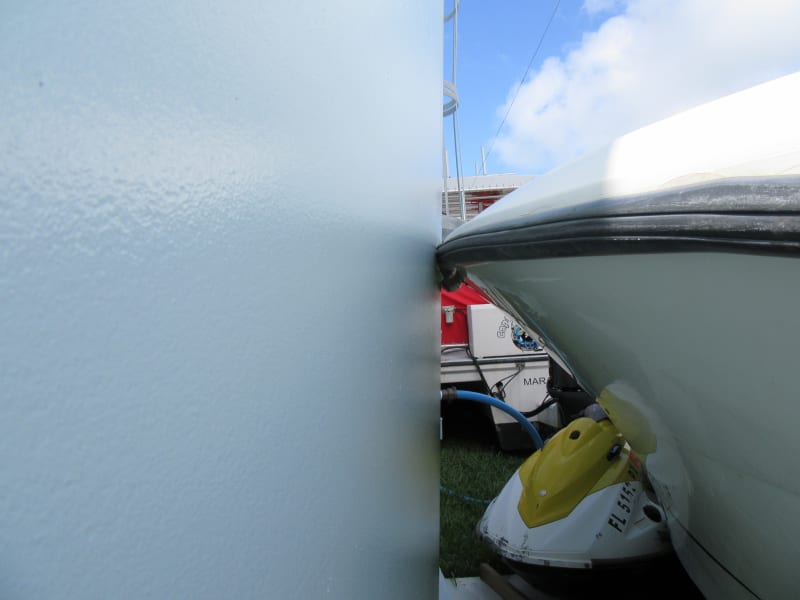I have worked 5 years in Southern California (Ventura) and 36 years in Central California (Fresno). All of my water tank projects have been in California, from as far south as Los Angeles County to as far north as Lassen County. I have also taken specific note of many of the water tanks within sight of my driving routes. What I have seen traveling up and down California is this, but YMMV:
[ul]
[li]Most large water storage tanks I have seen (~1.0 million gallons (MG) and larger) have been ground-level welded steel tanks.[/li]
[li]The smaller tanks I have seen have been a mix of ground-level welded steel tanks and ground-level bolted steel tanks.[/li]
[li]In the San Joaquin and Sacramento Valleys, I have seen several dozen elevated steel tanks. The newest ones are generally welded pedestal tanks, the older ones are generally welded multi-leg tanks, and the very oldest ones are small (< ~50,000 gal) welded or bolted multi-leg tanks. I have seen a couple elevated multi-leg steel tanks in more earthquake prone areas, but they are rare.[/li]
[li]I have seen quite a few concrete tanks in big urban areas, but not in rural areas. For example, Fresno has several.[/li]
[/ul]
Now for my personal experience with water storage tanks...
Most of my tank experience is with ground-level welded steel water storage tanks (AWWA D100). Over the years, I have designed more than a dozen, ranging in size from 0.3 million gallons (MG) to 3.0 MG. In addition, I have prepared detailed planning studies and preliminary designs (10% to 30% design level) for two or three dozen more, with the largest being around 4.0 MG.
I have also designed a handful of bolted steel tanks (AWWA D103), most recently a 100,000-gal tank for a small water company in the Sierra Nevada foothills and a 200,000-gal tank for a rural high school.
I have evaluated concrete tanks (AWWA D110) as alternatives to steel tanks, but my clients always chose steel. Most of the small municipalities and special districts I have dealt with are far more concerned about capital costs than lifecycle costs. The cynic in me says they want to save up-front costs by choosing steel and long-term costs by ignoring maintenance. My own analyses over the years comparing life cycle costs for welded steel and concrete has them being roughly a toss-up. Bolted tanks are generally cheaper up front, but I never liked the older designs I evaluated. The newer bolted tank offerings look to be much better structures, with better gaskets and better coatings.
At my last firm, which I left at the end of 2017, we were working with a small city to upgrade their water system, among other things. The program management firm we worked under was convinced that a DN concrete tank was the best choice because this city was very poor with maintenance but could handle the higher capital cost of a concrete tank because of energy saving measures across all city facilities that the program management firm was recommending. When I left, my recommendation was for a 2.0- to 2.5-MG tank in the middle of town and a secondary tank about a mile away that would be on the order of 1.5 MG, plus two more tanks in the future. Each tank would have a dedicated well to fill it and a booster pumping station to feed the distribution system. Several of the existing wells in the system would remain in service and others would be retired and destroyed. However, the new city engineer had all kinds of ideas about this plan of attack, some good and some not so good. Last week, on my way back from a project site visit, I had the opportunity to drop by this city and see what they had done. The city had constructed two tanks, which looked to be about the sizes I had recommended, but both were bolted instead of concrete.
BTW, Advance Tank out of Colorado (your area of interest) built a 1.6-MG welded steel water storage tank for me in Southern California in the mid 1980s and it was one of the smoothest projects I have ever had. In fact, only two of my tank projects have been troublesome. The first was a 3.0-MG welded steel water storage tank in Southern California, but all the problems were caused by the prime contractor's superintendent (the water district ended up barring him from the site). The tank sub and the prime's field crew were great. The other project was led by the tank fabricator (they did a great job with the tank construction), but they basically ignored the project and their subs after the two tanks were completed. The city had to threaten a lawsuit to get the tank fabricator to actually superintend the rest of the work.
============
"Is it the only lesson of history that mankind is unteachable?"
--Winston S. Churchill

![[machinegun] [machinegun] [machinegun]](/data/assets/smilies/machinegun.gif) .
. 